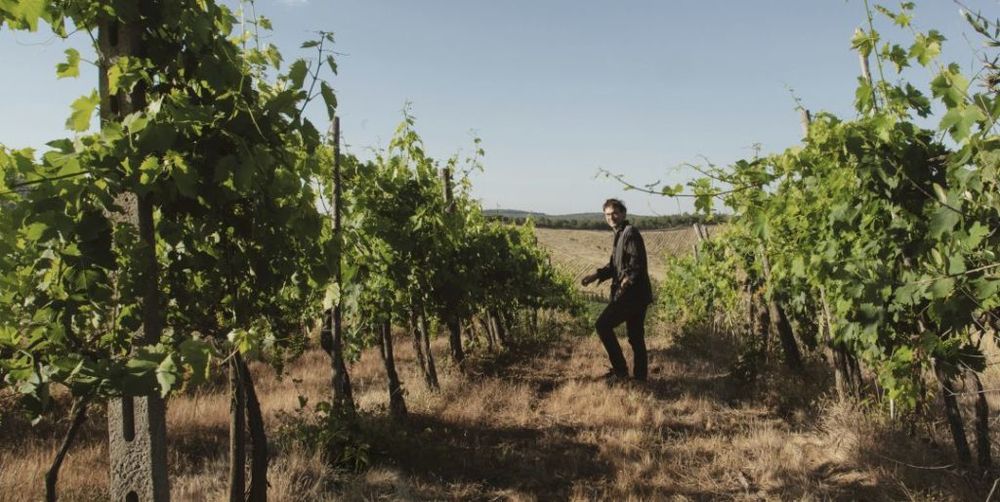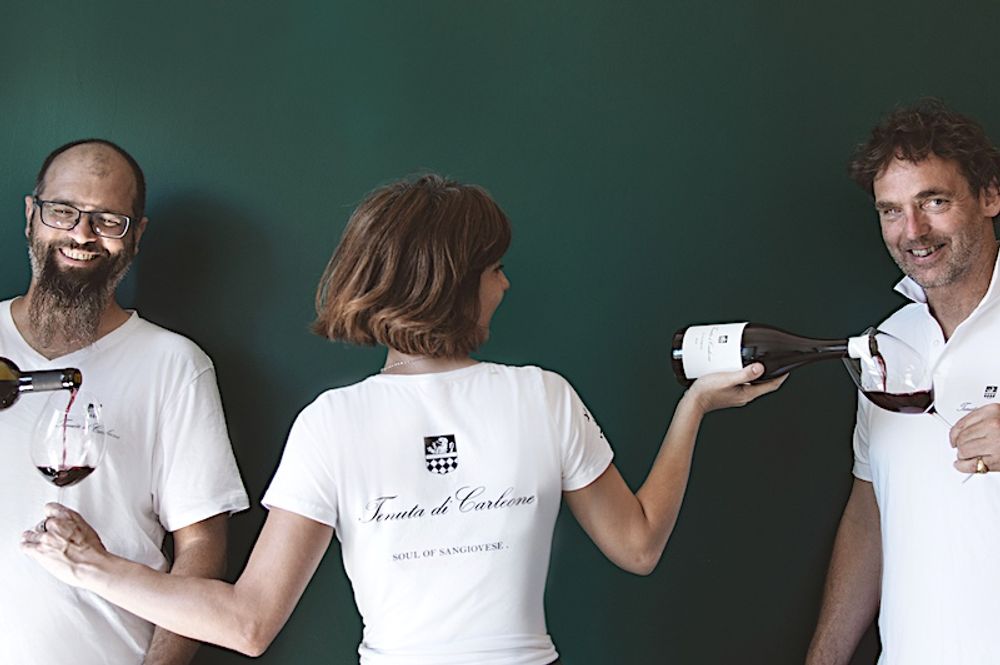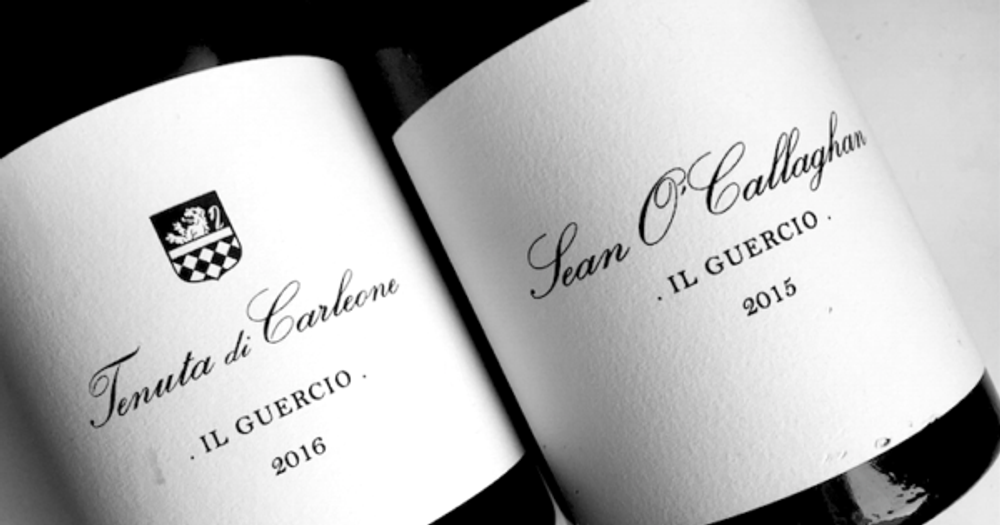If you want to discover and take a deep dive into what different winemakers are doing with Sangiovese then the Sangiovese RESET tasting in London on March 3 is a must. It’s also an opportunity for Sean O’Callaghan to show his new wines from Tenuta di Carleone.
Tell us about your winery and the background to the business?
Tenuta di Carleone was formed when I left Riecine after 26 years at the helm. It is a combined project with the Il Guerico brand I started when I left and an Austrian entrepreneurial family from Linz, Karl Egger with his sister Kristine.
We decided to join forces and start making some serious Sangiovese wrapped in a simple but elegant packaging. Sounds corny but something that reeks of terroir, as in the “sense of place”, something that might help put Radda and Chianti Classico back on the map.

O’Callaghan has made Radda and Chianti Classico his home
I was given a clean slate to do what I like and more importantly what we would like to drink. So I pushed ahead to start carrying on what I had started at Riecine, looking to use natural ferment, minimum extraction combined with long macerations, whole bunches etc. Various different containers but based on Nomblot cement tanks, some stainless steel and open top small batch fermenters.
The Eggers are renovating two amazing villas which will up for renting from May around one of them, Castiglioni where we have the original 5 ha of vineyard. We are on the opposite side of the valley from Montevertine, just down the valley from Poggerino. Radda central.
Over the last three years we have rented and acquired a few more hectares, some in Radda and some in the neighbouring villages of Gaiole and Vagliagli, bringing us up to 15ha. The vineyards are all organic or in conversion. We use some elements of biodynamics when appropriate. All the vineyard and soil management tactics are trying to get ripe healthy fruit with as higher acidity and low alcohol as possible.
How much of your wine do you export and what are your main overseas markets?
We export around 70% of our wines. Our main markets are Switzerland, Germany, Austria, Japan, UK, Norway and the Benelux.

What do you see as your target markets in the future and why?
Depending on the tariffs we are looking at the US, also Russia and other markets in Asia
Your key focus is on Sangiovese – can you explain the style of Sangiovese you make and what is your approach towards winemaking?
A French sommelier in London once described my wines as a baby from Pinot Noir and Nebbiolo. So I am convinced that Sangiovese should be elegant, light with a strong tannic backbone. So I am using mostly untreated cement tanks, some small open top fermenters. Natural ferments with whole bunches and long maceration. Small batches of some new oak mostly in large barrels.
What changes have you made to your viticulture of Sangiovese in recent years?
I have completely revised my approach due to climate change. Twenty nine years ago when I arrived here in Tuscany we would start picking towards the end of October, and we would still have fairly unripe Sangiovese, often not more than 12% abv. Now we start picking towards the end of September, fighting to keep the wines under 15% abvc.
So we now do not do any green harvesting, this way we can almost overcop helping to keep the sugar levels lower and acidity higher. While dropping the leaves around the bunches two to three weeks before harvest, we also pick through thinning out where there is just too much. We make the rosé with these grapes.

Do you find certain export markets prefer a particular style of Sangiovese – if so what are the differences?
Maybe the Anglo Saxon markets are still looking for bigger softer style, like in the UK and US, but things are generally turning towards a lighter, more elegant style.
Why are you coming to Sangiovese Reset event in London?
Because I like Walter and what he has done to help the Italian wine scene. It seems like a great way to promote Sangiovese.
Can you give some reasons to UK buyers why they should taste your wines?
Because it is a different style of Sangiovese to what most of them will know. Because they are wines that are completely natural but they are not “Natural Wines”.
I think Burgundy drinkers will appreciate them as something different and definitely cheaper.
Which channels of the UK market do you think your wines are best suited for?
We currently sell to Winemakers Club who distribute them mainly in London and bits of the UK. John (Baum) is an old friend and does a pretty good job!
What do you think of the UK wine market and how important is it to you?
It should be an amazing market, but it is very price orientated and a bit difficult to get a footholds. Italian wines are still seen as inferior to French, Australia and California.
Anything you are looking to do whilst you are in London?
Eat at Kiln in Soho, hopefully drop in to the guys at River Café, have a chop at the Quality Chop House, a big plate of fish and chips from Master Fish in Waterloo, and a big greasy fry up breakfast somewhere on a corner in London.
Sangiovese RESET

- The Sangiovese RESET takes place on March 3 at London’s Royal Horticultural Halls. You can find out more and register here.
- Jane Hunt, a Master of Wine with over 20 years of experience in organising large scale trade tastings and seminars with an almost exclusive focus on Italy, and Walter Speller, Italian correspondent of www.JancisRobinson.com have come up with the Sangiovese RESET concept.
- This new initiative follows two very successful editions of ‘Nebbiolo Day’.
- Participation at Sangiovese RESET will be by invitation to a select group of up to 90 of the best Sangiovese producers from central Italy. Seminars led by experts on the country and the grape variety, its past as well as its future, will deliver additional in- depth information, education and lively debates.
- Sangiovese RESET is a full day’s immersion in Italy’s Prima Donna grape number one: Sangiovese. A first for this variety, Sangiovese RESET brings together producers from a wide number of contrasting regions of Italy where Sangiovese is grown and will illustrate how this widely planted grape performs in different climates and soil types with varying viticultural management systems.































